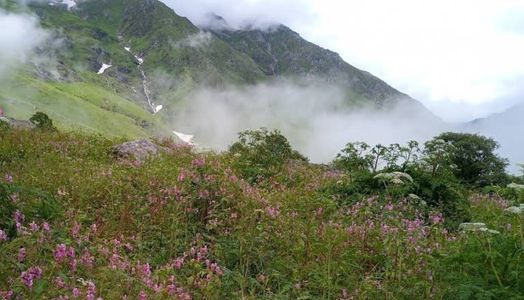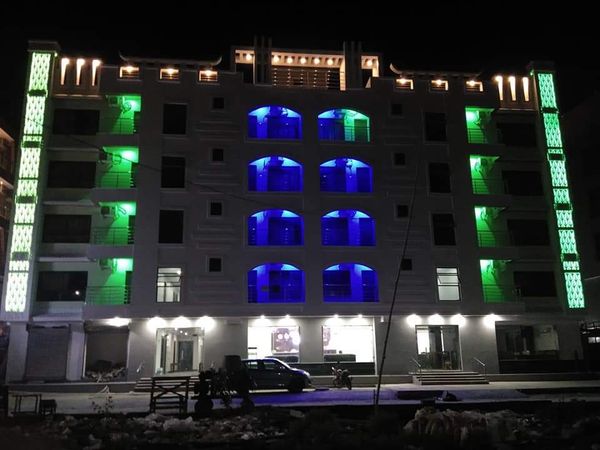How Climate Change is Impacting the Monsoon Patterns in the Valley of Flowers
 Deepanshu Travel
22 Jul, 2025
10 mins read
207
Deepanshu Travel
22 Jul, 2025
10 mins read
207

The Valley of Flowers, located in the Indian state of Uttarakhand, is one of the most beautiful natural wonders in the world. Known for its vibrant meadows, rare flowers, and peaceful surroundings, it attracts thousands of visitors each year. The valley is also a UNESCO World Heritage Site and home to many rare plants and animals.
The Valley of Flowers depends heavily on monsoon rains for its seasonal bloom. The monsoon plays a key role in the growth of its plants and the health of the entire ecosystem. However, in recent years, the pattern of monsoon rain has started to change. This change is mainly due to climate change. In this article, we will explore how climate change is affecting monsoon patterns in the Valley of Flowers and what it means for its future.
What is Climate Change?
Climate change refers to long-term changes in temperature, rainfall, wind, and other weather conditions. These changes are happening faster today because of human activities such as burning fossil fuels, cutting down forests, and releasing greenhouse gases into the air.
When the climate changes, it affects many things including sea levels, snowfall, and rainfall. The monsoon, which is the seasonal rain system in India, is one of the most sensitive parts of the climate. Even small changes in temperature can cause big changes in when, where, and how much rain falls.
Importance of the Monsoon in the Valley of Flowers
The Valley of Flowers is a high-altitude national park located in the Himalayas. It opens to tourists during the summer months, usually from June to October. This is the time when monsoon rains arrive in the region and help the valley bloom with hundreds of flower species.
The monsoon brings water to the soil, which is essential for the plants to grow. It also cools down the environment after the dry and hot summer months. Without the monsoon, the valley would not be able to support its rich variety of life.
Changes in Monsoon Timing
One of the biggest impacts of climate change is the shift in monsoon timing. In the past, the monsoon used to arrive in the valley by late June or early July. But now, the rain is either arriving later or starting earlier than expected. This unpredictable timing confuses the natural cycle of the valley.
When the rains come too early, the flowers may bloom before the ideal season, which can affect their growth and appearance. If the rain comes late, the plants may not get enough water to grow properly. Either way, the natural balance of the valley is disturbed.
Uneven Rainfall Patterns
Along with changes in timing, the pattern of rainfall is also changing. In the past, the rain used to fall gently over a longer period. This gave the soil enough time to absorb water, which helped the plants grow steadily.
But now, rainfall often comes in heavy bursts followed by long dry spells. This means there is too much water at once, and then no rain at all for several days. The heavy rains can cause soil erosion and landslides, while the dry spells can leave the plants thirsty and stressed.
Such uneven patterns are harmful not just to the flowers but also to the soil, animals, and microorganisms that live in the valley.
Increase in Extreme Weather Events
Climate change is also leading to more extreme weather events like flash floods, cloudbursts, and hailstorms. These events can damage the delicate ecosystem of the Valley of Flowers. Flash floods can wash away plants, soil, and even walking trails used by tourists. Cloudbursts can cause sudden and dangerous flooding that affects both wildlife and human safety.
In recent years, nearby areas like Joshimath and Chamoli have experienced such events more frequently. The Valley of Flowers, being in the same region, faces a higher risk now than ever before.
Impact on Flowering Seasons
The unique beauty of the valley comes from its wide range of flowers that bloom at different times during the monsoon. Each species of flower has its own season to bloom. But with the changing climate, this blooming calendar is getting disturbed.
Some flowers are blooming earlier than usual, while others are blooming late or not at all. This not only affects the look of the valley but also impacts the insects, birds, and animals that rely on these flowers for food and shelter.
Pollination patterns are also getting affected. If a flower blooms before the pollinators arrive, it may not produce seeds. This will reduce the number of flowers in the following seasons, leading to long-term damage.
Threat to Local Biodiversity
The Valley of Flowers is not just about flowers. It is also home to many rare animals like the snow leopard, Himalayan musk deer, and various birds and butterflies. All of them depend on the regular monsoon cycle for food, water, and breeding.
As climate change disrupts the monsoon, it puts pressure on the entire food chain. Animals may find it harder to find food, and some may be forced to move to other areas. This can reduce the biodiversity of the region and make the ecosystem weaker.
Challenges for Conservation and Tourism
Tourism is an important part of the local economy in the Valley of Flowers region. Thousands of people visit the valley every year to see the bloom and enjoy its beauty. But with the changing monsoon, it becomes harder to predict the best time to visit.
Unpredictable weather can also pose safety risks to tourists. Heavy rains and landslides can block roads and trails, leading to delays and cancellations. This not only affects tourism income but also the motivation for local people to protect the valley.
Conservation efforts also face new challenges. It becomes harder to plan and manage the area when weather patterns are not stable. Park authorities must now deal with both natural and human threats, which requires more resources and better planning.
What Can Be Done?
To protect the Valley of Flowers from the effects of climate change, several steps can be taken:
- Better climate monitoring: Installing weather stations in and around the valley can help track changes in temperature, rain, and other weather conditions.
- Sustainable tourism: Tourists should be educated about how to reduce their impact on the environment. Limiting the number of visitors and using eco-friendly practices can help.
- Community involvement: Local communities should be involved in conservation efforts. They have traditional knowledge and a deep connection to the land.
- Government support: More funding and scientific research are needed to understand the full impact of climate change and find solutions.
Conclusion
The Valley of Flowers is one of nature’s most beautiful gifts, but it is now facing serious challenges due to climate change. The changing monsoon patterns are affecting the timing, amount, and quality of rainfall. This has direct impacts on the flowers, animals, soil, and even the people who visit or live near the valley.
If we want to protect this magical place, we must take climate change seriously. Through awareness, science, and sustainable practices, we can help the Valley of Flowers survive and bloom for future generations.
Written By:
Deepanshu Travel



Hotels at your convenience
Now choose your stay according to your preference. From finding a place for your dream destination or a mere weekend getaway to business accommodations or brief stay, we have got you covered. Explore hotels as per your mood.





